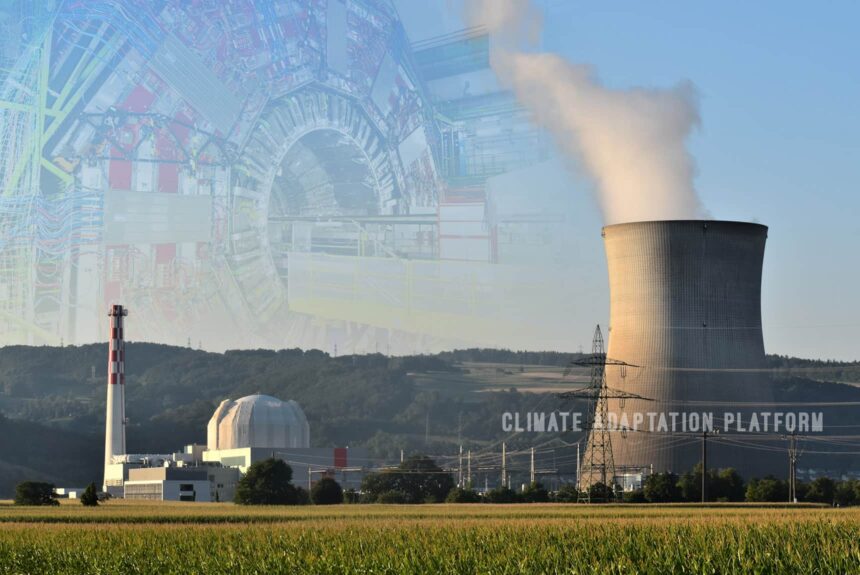Coal is currently the world’s leading energy source. It is cheap but emits much carbon dioxide contributing to climate change.
Nuclear energy is an up-and-coming clean energy source, but generating nuclear energy remains complicated and costly, not to mention the radioactive waste from nuclear fission that can be dangerous for human health for thousands of years if not properly stored.
Today nuclear energy provides 10% of the world’s energy from about 440 power reactors (Nuclear power, 2023). All these nuclear power plants use nuclear fission. However, there is another way to generate nuclear energy, and it is through nuclear fusion.
The foundation of nuclear energy is harnessing the power of atoms by splitting apart, a process called fission, or combining them, called fusion (Fission vs Fusion, 2021).
During nuclear fission, a neutron collides with a uranium atom and splits it, releasing a large amount of energy through heat and radiation.
In nuclear fusion, atoms are combined or fused to form a larger atom. Fusion is the source of energy in the sun and stars.
Between nuclear fission and nuclear fusion, the latter is more appealing because it creates less radioactive material than fission and generates a nearly unlimited fuel supply. However, the benefits are countered by difficulty in harnessing fusion as its reactions are not easy to control and expensive to create the conditions needed for a fusion reaction.
There is ongoing research and technology development on harnessing nuclear fusion as a source of energy for heat and electricity. Recent technological breakthroughs in nuclear fusion have made this near-impossible clean energy solution worth considering.
The Economist article says that nuclear fusion as an additional power source on the grid might be available sooner than expected or in the next thirty years. For decades, fusion projects have been the preserve of governments. Still, in the past few years, many private companies worldwide have invested millions, if not billions, of dollars in nuclear fusion projects. These firms aspire to make nuclear fusions commercially available by 2030 and add the generated energy to the grid to help decarbonise it.
The Fusion Industries Association, the trade body for the international nuclear fusion industry, identifies more than 40 nuclear fusion firms worldwide. Apart from the six firms, the rest are small startups. The biggest of the six is ITER, a massive nuclear fusion project in France estimated to cost $65 billion, where researchers are building a magnetic fusion device.
These five other nuclear fusions – General Fusion, Tokamak, Commonwealth, Helion, and TAE- have invested more than $250m and are using smaller and cheaper machines than ITER.
The BBC article explains how nuclear fusion works. When two atoms of a light element, such as hydrogen, are heated and combine to form a single heavier element, such as helium. The nuclear reaction produces massive amounts of energy which can be captured. But getting these two elements with the same positive charge is very hard because they naturally repel each other. So huge amounts of energy are needed to do this.
The sun’s extremely high temperature of about 10 million degrees Celsius and significant pressure of more than 100 billion times than the earth’s atmosphere allow the fusion to happen. However, replicating these conditions remains challenging for scientists and engineers.
Recreating the sun’s conditions is a massive and complicated task, and scientists can only attempt to use various techniques. But despite promising breakthroughs in the last few years, large-scale nuclear fusion is still many years away.
These nuclear firms aspire to build a prototype that is a generation away from a full-scale power station to be operational by the 2030s generating between 200MW and 400MW of power and supplying these to the grid.
If these firms prove successful and the energy it produces is affordable, they could transform the energy landscape.
Sources:
Nuclear Power in the World Today (2023 March). World Nuclear Association. Retrieved from https://world-nuclear.org/information-library/current-and-future-generation/nuclear-power-in-the-world-today.aspx
Fission vs. Fusion – What’s the Difference? (2021, May 27). Duke Energy. Retrieved from https://nuclear.duke-energy.com/2021/05/27/fission-vs-fusion-whats-the-difference-6843001
Fusion power is coming back into fashion. (2023, March 22). The Economist. Retrieved from https://www.economist.com/science-and-technology/2023/03/22/fusion-power-is-coming-back-into-fashion
Stallard, E. (2022 December 14). Nuclear fusion breakthrough – what is it and how does it work? BBC. Retrieved from https://www.bbc.com/news/science-environment-63957085
Nuclear Fusion Power. (2022 December). World Nuclear Association. Retrieve,,d from https://world-nuclear.org/information-library/current-and-future-generation/nuclear-fusion-power.aspx



Leave a Reply